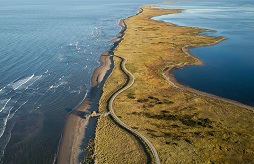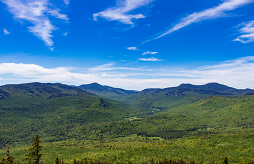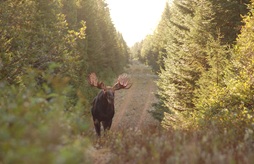World Wetlands Day is an annual celebration of a crucial and often overlooked ecosystem that supports biodiversity and mitigates climate change. A wetland can include many things, from inland marshes and floodplains to coastal estuaries, low-lying areas, and saltwater marshes. They are vital to a healthy, diverse ecosystem and maintaining or improving air and water quality, and a wide range of species call wetlands home.
At J.D. Irving, Limited, we have a commitment to a wide range of wetland areas, which are listed in our award winning, voluntary conservation program. To date, we have more than 280 sites (encompassing 22,425 hectares) of wetlands protected for birds, plants, reptiles, and amphibians. We also automatically buffer wetlands in the areas we operation off from our operations, to preserve the biodiversity of the area.
Here are a few of our favourite wetlands!
(1).jpg)
Saltmarshes like the one at the Irving Nature Park in Saint John, New Brunswick, play a critical role in the ecology of the area. Historically, this marsh provided hay for the cattle and horses of the early European settlers prior to farmland development in the province’s interior. Today, it provides essential nutrients to the bay’s food web as poorly rooted plants are pulled into the bay and used by the ocean’s ecosystem. The marsh also provides a buffer between the harsh waves of the Bay of Fundy and the upland areas of the park. The marsh is recognized by Bird Studies Canada as an Important Bird Area (IBA), which is an international recognition for its significance to birds and biodiversity.
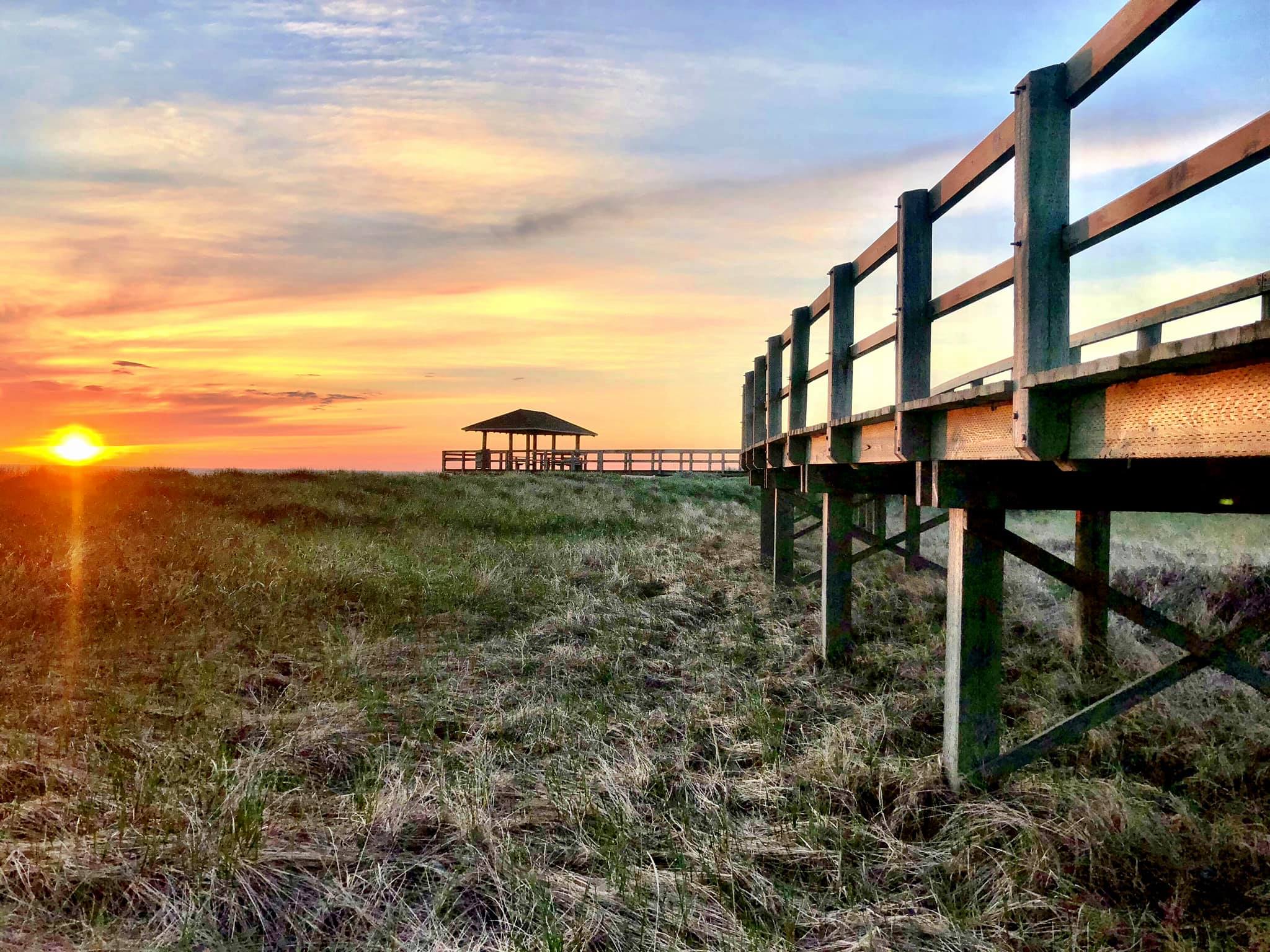
The coastal wetland of La Dune de Bouctouche in Bouctouche, New Brunswick, is one of the last great dunes in our corner of North America, and a delicate ecosystem. It is listed as an IBA, and home to many species of shorebirds that rely on the Dunes as a key staging and stopover area to rest and feed during their annual migration.
Marram grass plays an important role in helping preserve this area and the ever-shifting dunes. Marram grass, or dune grass, can grow up to one metre tall, with roots between two and four metres tall. This deep-rooting plant helps stabilize the sands during storms, and is extremely salt- and cold weather- tolerant.
It cannot, however, withstand human disturbances, which is why we have placed an 800-metre boardwalk along the dunes so that visitors can enjoy the beautiful ocean views and animals while maintaining the biodiversity and health of the area.
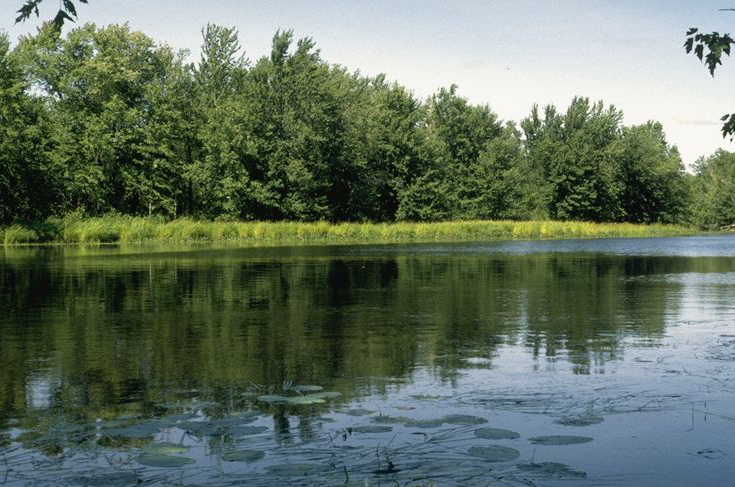
As one of the most expansive wetland complexes in the Maritimes, the Portobello Creek Floodplain near Fredericton, NB provides important production, staging, and migration areas for a variety of waterfowl, including wood ducks, least bitterns and Canada warblers. It is part of a large alluvial floodplain and each spring, the riverbanks overflow, flooding all but the highest forested areas. The Portobello Creek itself is about 12 kilometres long, and access to the area is unrestricted. Visitors can enjoy a range of activities such as wildlife viewing, swimming, hiking, boating, snowshoeing, cross-country skiing and more!
Read more about our commitment to conservation here: https://jdirvingconservation.com
Related
Find adventure in your own backyard!
Thank You Tree Planters
Irving Woodlands celebrates World Tourism Day 2021
Our forests, continually giving: Irving Woodlands celebrates National Forest Week
Highlighting Incredible Shorebird Migration at the Irving Nature Park
2019 State of the Forest Report
8 Reasons to Celebrate World Habitat Day
First Nations Artist Gives New Life to Butternut Tree Donation from the JDI Woodlands Team
Irving Nature Park & La Dune de Bouctouche - Celebrating 20,000 students through Project Webfoot with Ducks Unlimited Canada
J.D. Irving, Limited and the Town of St. George Renewable Land Use Agreement for Nine Sites
Parks Open with Annual Run
Major study on the ecology of moose populations in the context of climate change
Nature Conservancy of Canada receives $1 million gift from J. D. Irving, Limited
Lessons from the Forest
Celebrating the Wildlife Calling Our Forests Home
Celebrating Women in Science
Eleven Reasons to Celebrate World Wetlands Day!
Outcome Based Forestry Overview
Outcome Based Forestry in Maine
Songbird Study Update
Rare Plant Found Near Petitcodiac
JK Irving Plants Company’s Billionth Tree with sons Jim and Robert
Fishing for Answers on the Miramichi
J.D. Irving, Limited supporting moose study to examine impacts of winter tick
Nature Park Hosts 14th Annual Brent Kelly Run
Northeast Deer Research Partnership in Second Year
Northeast Deer Research Partnership in Second Year
Congratulations Dr. MacLean
Location of First RCAF Second World War Casualties Commemorated Near Beaverbrook Lake NB
University of New Brunswick launches Atlantic salmon research chair as part of $1.3 million in funding from Collaboration for Atlantic Salmon Tomorrow
J.D. IRVING WINS SFI INC. AWARD FOR CONSERVATION LEADERSHIP ON 68 FOREST RESEARCH PROJECTS
Greg Adams Honoured with Forester Achievement Award
Collaboration for Atlantic Salmon Tomorrow (CAST) Funding
Irving Woodlands LLC Releases its Annual outcome Based Forestry Update for Maine
Enviro-Training at J.D. Irving, Limited with Kelly Honeyman
J.D. Irving, Limited Honoured for Outstanding University-Industry Partnership and Ground-Breaking Discovery
Dr. David Miller and JDI Honoured for Outstanding University-Industry Partnership and Ground-Breaking Discovery
Congratulations! 100 JDI Tree Planters Set New World Record for Tree Planting
CAST Scientists Internationally Published for Largest Genetic Study in North America on Wild Salmon
NB Birds Migrating up to 13,000 km!
A Successful Season: Irving Nature Park and La Dune de Bouctouche close for the year
Winter Wildlife: meet Marty the pine marten at the Irving Nature Park!
Winter Wildlife: What a hoot!
Celebrating Earth Day 2022
Adapting to a changing climate
Thank you to our 2022 tree planters!
Recognizing World Migratory Bird Day
Recognizing US National Forest Week
Biodiversity in the working forest: National Forest Week 2023
Nature parks close out another successful season
Enjoy the woods in winter
Irving Woodlands Welcomes Tree Planters
Celebrate New Brunswick Day at one of our conservation sites
Winter Wildlife: New Brunswick's provincial bird
Discover the gift of nature this long weekend
Irving Nature Park's Saints Rest Marsh recognized as a Treasured Wetland
Fall Brook Falls opens for May long weekend
Celebrating National Forest Week in Maine
Irving Woodlands recognizes National Wildlife Week
Questions about our Healthy Forest Approach?
Read the FAQ.
.jpg)
(1).jpg)

(1).png?n=7605)



.jpg)







.jpg)





.jpg)




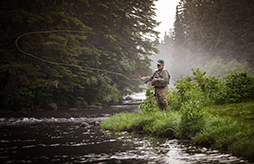
















.jpg)


.png)








